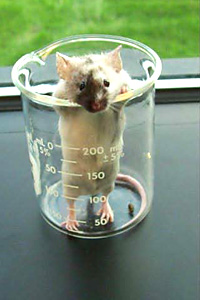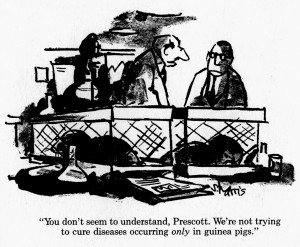Girl Cooties Menace the Singularity!
Monday, July 20th, 2009 A recent entry by Mike Treder at the IEET site (Institute of Ethics and Emerging Technologies) discusses the Singularity in connection with the upcoming Singularity Summit organized by the SIAI (Singularity Institute for Artificial Intelligence).
A recent entry by Mike Treder at the IEET site (Institute of Ethics and Emerging Technologies) discusses the Singularity in connection with the upcoming Singularity Summit organized by the SIAI (Singularity Institute for Artificial Intelligence).
I was totally unaware of this event until I visited the IEET site. Given what I know as a scientist about the likelihood of the Singularity, I couldn’t muster much interest. But ever the curious cat, I toddled over and examined the roster of speakers. All are white men. For several, their sole relevant qualification is that they believe in the imminence of the Singularity.
I pointed this out in my comments at the IEET — and a SIAI representative informed me that they had looked really hard for qualified women and, since they found none, “would you rather we picked a token female with nothing to say?” Then one of the speakers chimed in, to let me know that “the gender war was a thing of the eighties”. It got even funnier after that, as more Freudian slips showed underneath the space suit of what passes for original progressive thinking.
How highly qualified are those so carefully chosen for admission to the boys’ treehouse sanctum? Let me give you a whiff. One of the participants is a dotcom millionaire who has concluded that giving the vote to women doomed capitalist democracy. One of the two speakers that sorta kinda qualify as biologists is the originator of the concept of quantum microtubules (the biomolecular equivalent of Intelligent Design). The other stepped down from on high to deliver unto transhumanists the revelation that mitochondrial dysfunction is linked to cellular damage… a radical notion hidden away by those power-hungry biologists in, oh, every Biochemistry 101 textbook since the seventies. Of course, this representation is not surprising, since the participation of a bona-fide biologist in such an event would be the equivalent of an astrophysicist attending an astrologers’ convention.
So I gave this some thought and came up with a solution that will give this event the unquestionable authority and nuanced expertise it deserves: Invite Sarah Palin. She’s as qualified as several of the speakers, her views on the future largely jibe with theirs, she’s all woman (no passé crap like feminism for her) and she’s just become available, so her fee should still be reasonable. Better yet, the SIAI should go for Anne Coulter. She’d fit the agenda and milieu even better, and her Ayn Rand-approved style would only further burnish the occasion.
I’ll be sending the SIAI an invoice for program development consulting.
Image: Aubrey Beardsley, drawing for Aristophanes’ Lysistrata: The Lacedaemonian Ambassadors (detail)
Update 1: After the many discussions sparked by this article, SIAI included a female speaker in the program… a SIAI employee. This is so telling that comments are superfluous.
Update 2: Many report that women didn’t feel welcome at the SS (appropriate initials, come to think of it) nor comfortable with the ideas presented. I’m surprised… not.


 About a week ago, the Internet went wild with the announcement that a “fountain of youth” drug had been found that extends life by about 10%. I picked a site at random and read the report, knowing full well what I would find buried somewhere in the story. Sure enough, there it was, tucked at the end of a paragraph halfway down: the study was done on mice.
About a week ago, the Internet went wild with the announcement that a “fountain of youth” drug had been found that extends life by about 10%. I picked a site at random and read the report, knowing full well what I would find buried somewhere in the story. Sure enough, there it was, tucked at the end of a paragraph halfway down: the study was done on mice.

 Yours truly
Yours truly